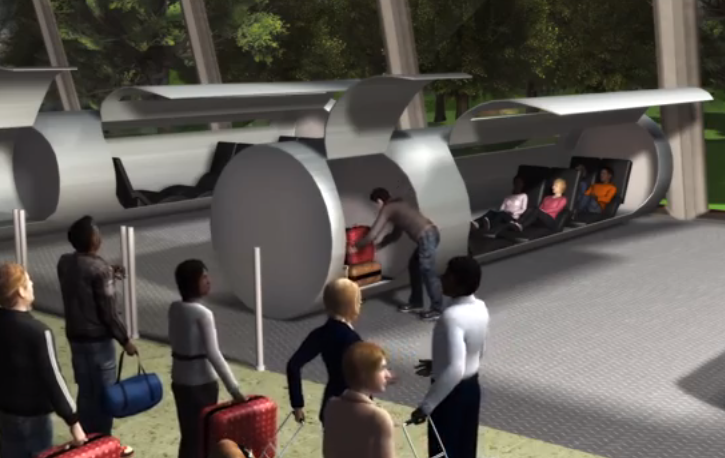Could a People-Mover From the Past Loom in our Future?
 |
|
|
Elon Musk has been in the news of late as he teases his next science fiction-sounding concept, a rapid transit system he calls Hyperloop. It's a futuristic system with roots deep into the past, and reminds me a bit of the alt-future coverage we've been doing with the unbuilt Bay Area feature.
The PayPal, Tesla Motors, and SpaceX co-founder hasn't offered many details about the transportation system he says could get people from San Francisco to Los Angeles in 30 minutes, except to describe it as a "cross between a Concorde, a railgun and an air hockey table." Musk has promised to offer a more complete description on Aug. 12 of the idea he sees as an alternative to Calfironia's high-speed rail. Before he does, this seems like a good time for a bit of a primer on this idea's history as a utopian fantasy throughout the 20th century.
While we don't know the specifics, Musk's system sounds on its face like the "vactrain" concept first conceived sometime in the 1910s by engineer Robert Goddard, though his designs weren't found until 1945. The idea was a train that operated in an evacuated tube, devoid of air and therefore air resistance, that could reach speeds of more than 1,000 mph.
In 1972, physicist R.M. Salter proposed a similar concept he called Very High Speed Transit, which would use magnets to levitate and propel cars in an evacuated tunnel.
While Musk hasn't specifically referred to those concepts, Space.com points out that he has said on Twitter that a drawing by self-described "tinker" John Gardi "is the closest I've seen anyone guess so far." And that drawing sure looks like a Vactrain or VHST.
Musk has said he got interested in the Hyperloop idea as an alternative to California's costly, inefficient high-speed rail initiative, another concept from last century that is swiftly becoming outdated. Perhaps someday we'll be "flying" to Los Angeles in evacuated tubes rather than riding on old-fashioned rails.
Even if it never happens, I'm looking forward to renewed interest in the technology if for no other reason than the futuristic models, demo versions, and films that will promote it, such as this one from a company called ET3 that's working on similar technology:
Why do I get a sense that in another 50 years or so this is going to look about as futuristic as the World of Tomorrow from the 1939 World's Fair?
- ‹ previous
- 134 of 677
- next ›




